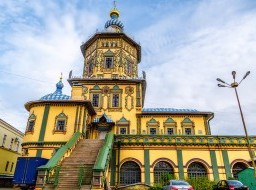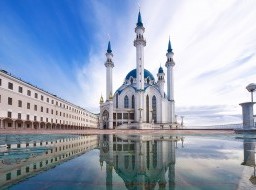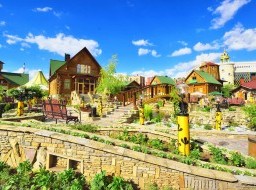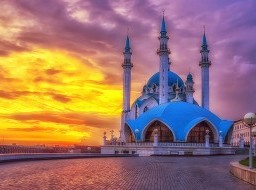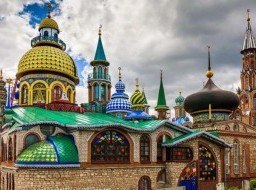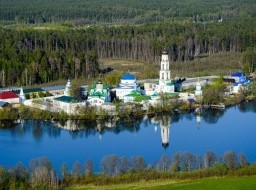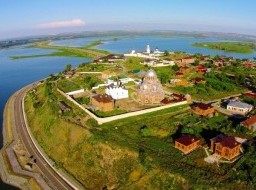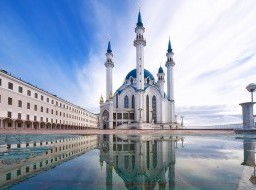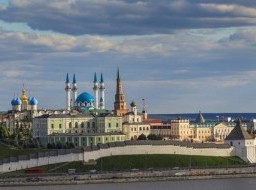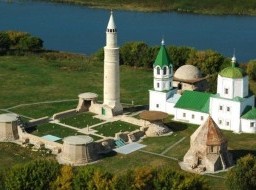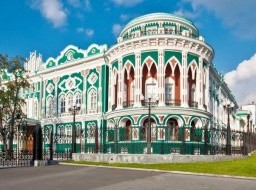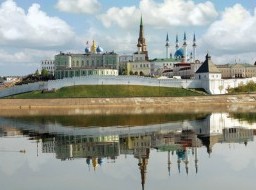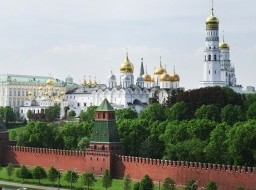Syuyumbike Tower
Syuyumbike Tower, also called the Khan's Mosque, is probably the most familiar landmark and architectural symbol of Kazan. Once the highest structure of that city's kremlin, it used to be one of the so-called leaning towers. By the early 20th century, its inclination was estimated at 194 centimeters (76 in). Diverse stabilization methods were used to straighten the tower in the 1930s and 1990s, and it no longer leans. The tower's construction date is enshrouded in mystery. Several scholars date its construction to the turn of the 17th and 18th centuries, when tiered towers were exceedingly popular in Russia, but others date the tower to the 16th century, probably before 1552. A legend postulates that the tower was built more than a century earlier by Ivan the Terrible's artisans in just a week's time. As the legend goes, the Kazan queen Söyembikä threw herself down from the highest tier, hence the name. This legend has nothing to do with the real history of the tower because Söyembikä was forcibly detained by Muscovite forces in 1551 and moved to the city of Kasimov and died years later. The legend was popular since the early 18th century. Some even go as far as stating that the tower is the only extant structure from the pre-Russian Tatar citadel. If the tower really reflects some original features of Tatar architecture, then its design should have certainly influenced that of the Kremlin towers in Moscow. Supporters of the theory point out that the only similar structures were built in Central Asia, which was politically and culturally connected with the derelict Khanate of Kazan. Several facts point to the validity of this theory; namely - the size of the masonry, that there is no documentary evidence supporting Russian building, the respect paid to the tower by the local Tatar population, and so forth. In the Imperial period, the tower used to be topped with a double-headed eagle, which the Bolsheviks replaced with a red star. It is currently crowned with a Muslim crescent. In the early twentieth century, the architect Alexey Shchusev reproduced the structure's outline in the Kazan Rail Station of Moscow. |


